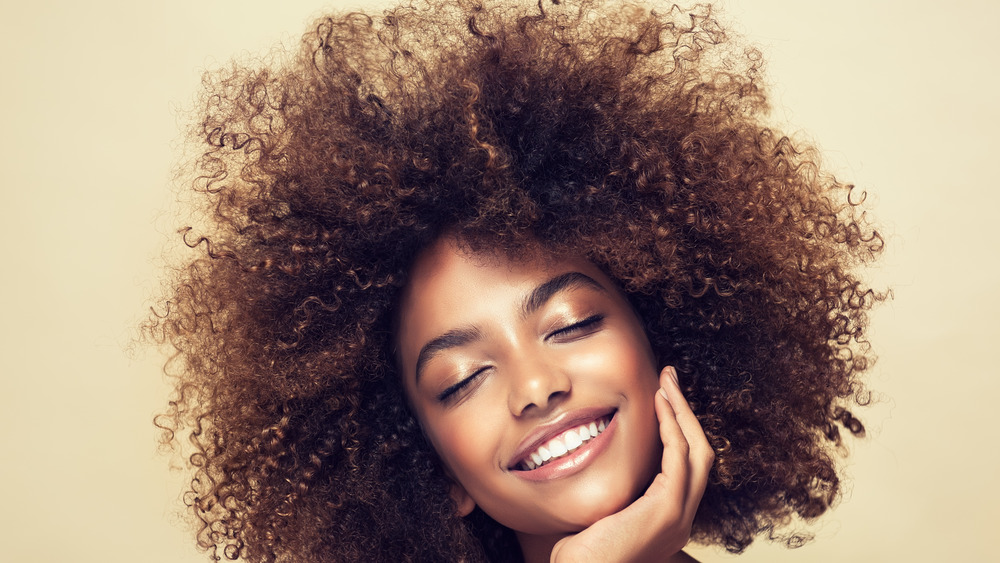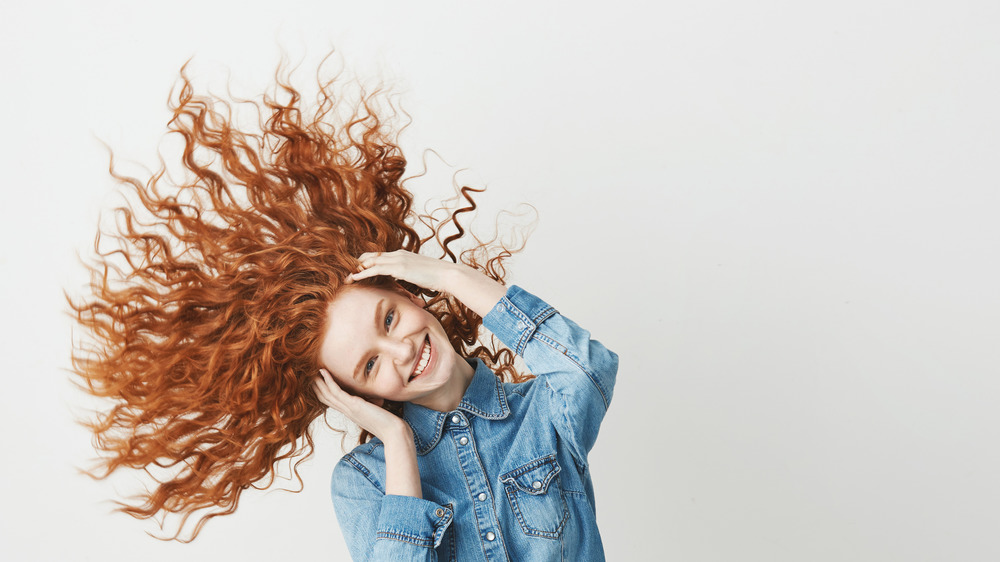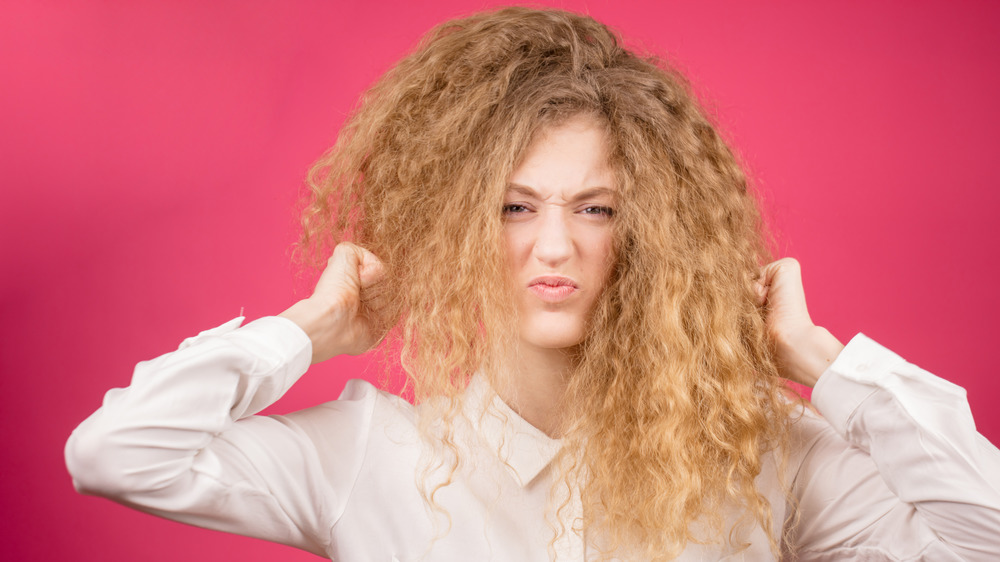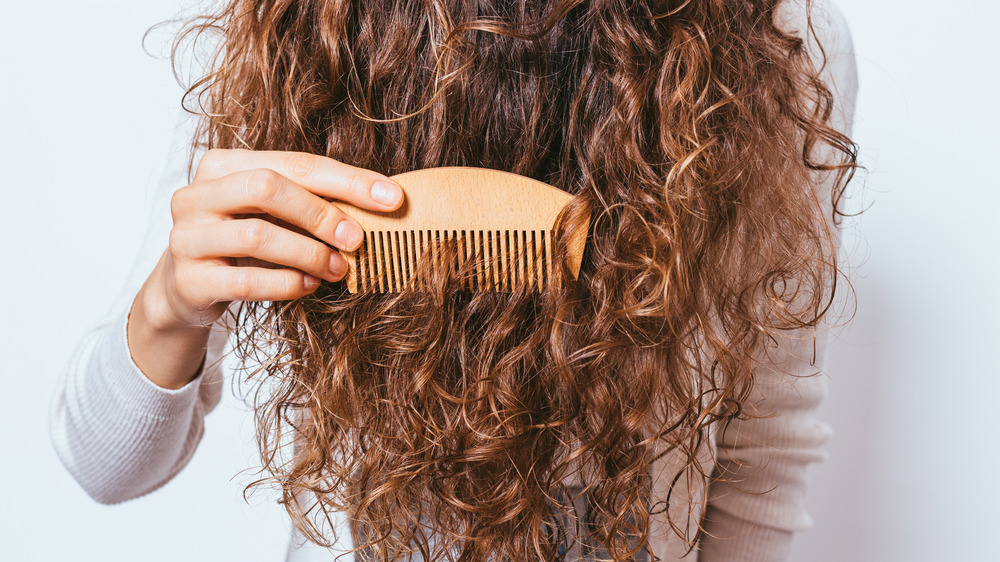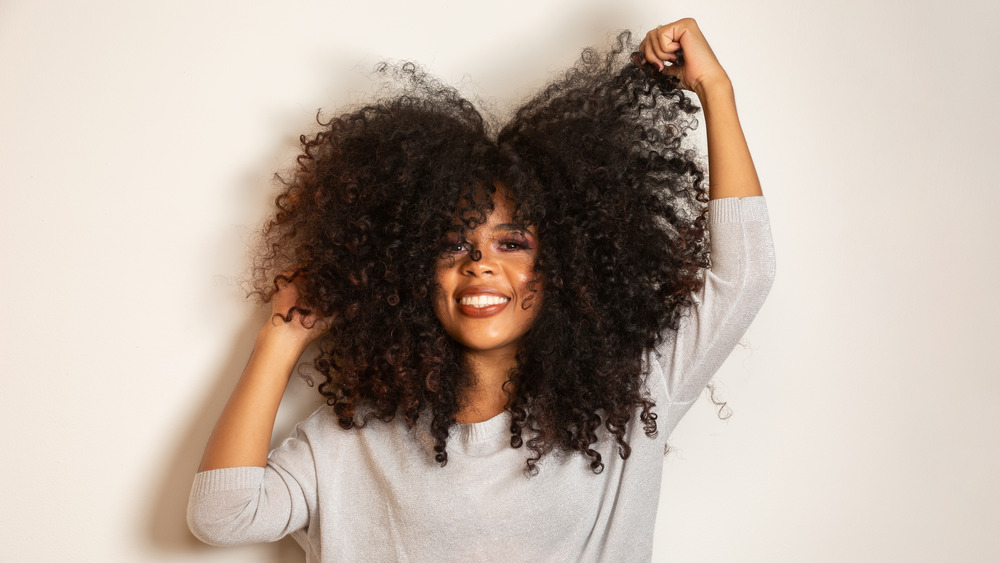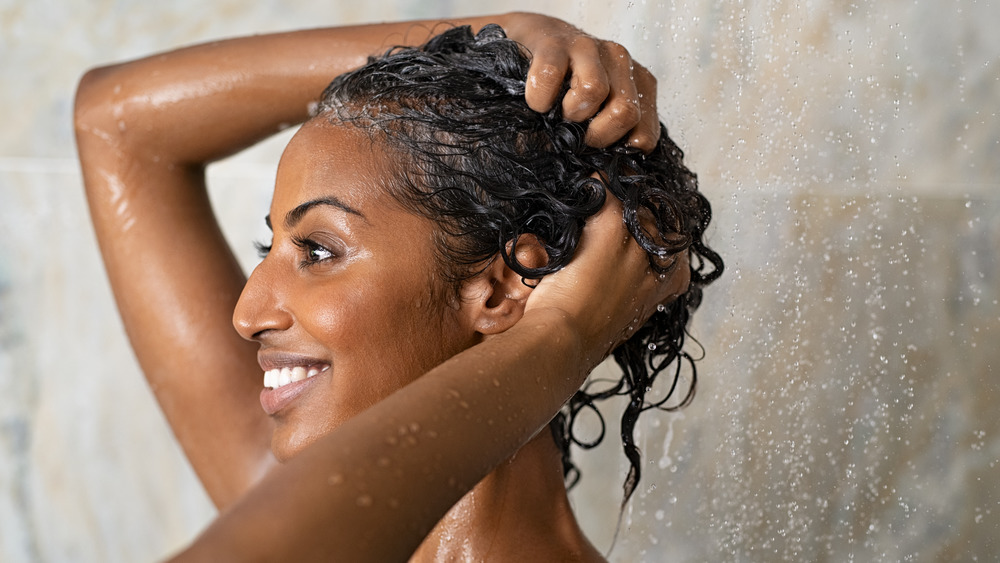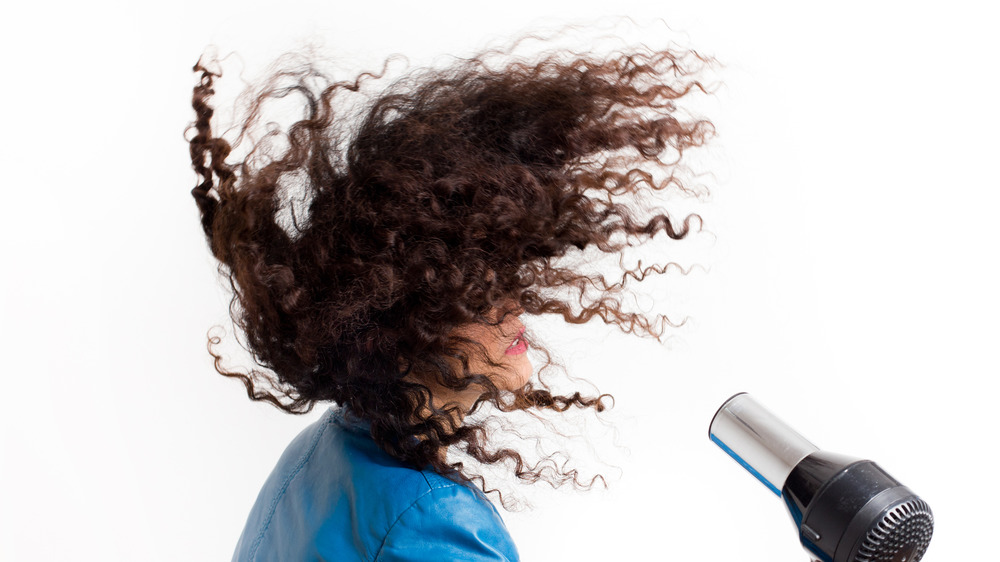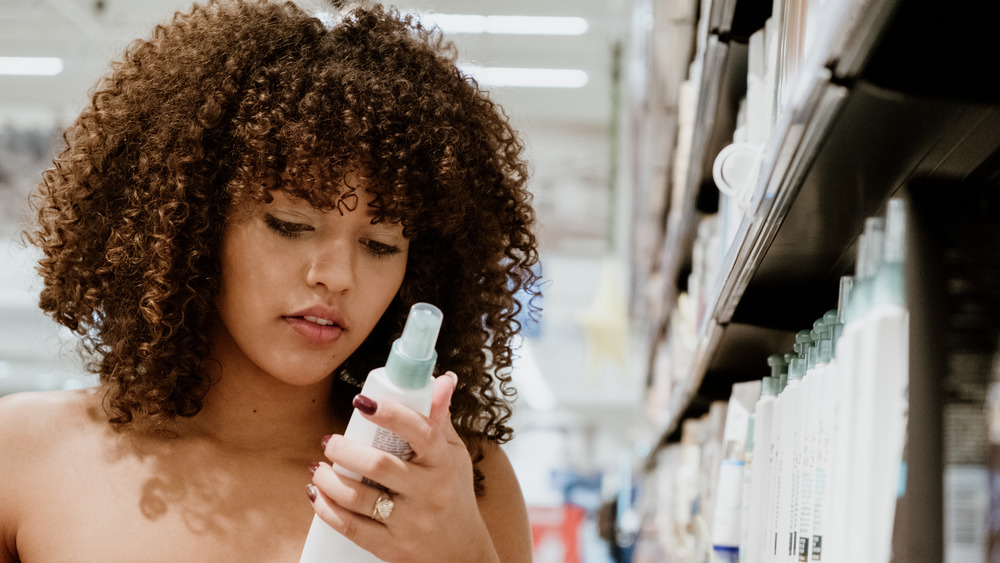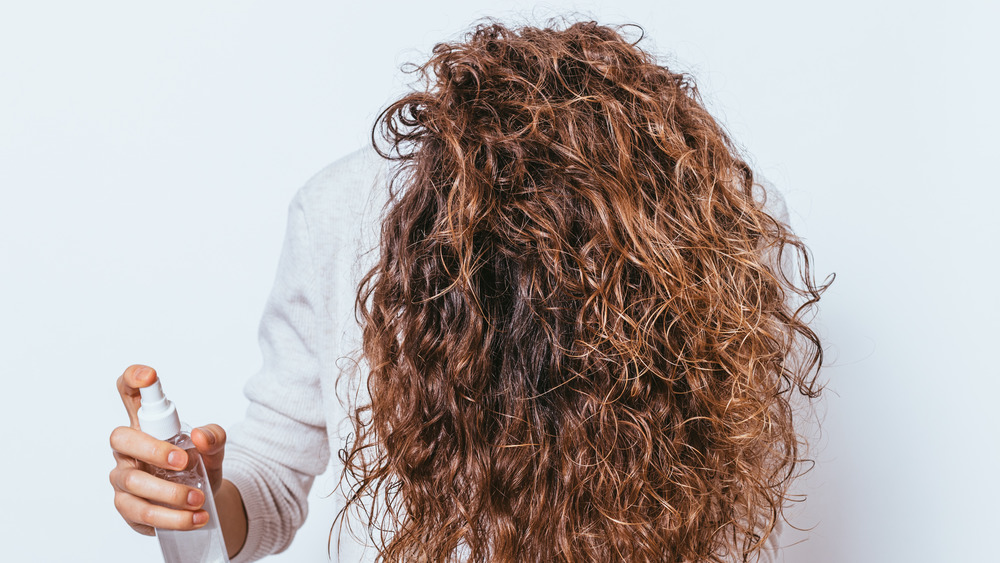The Truth About Curly Hair
Curly hair can be a blessing and curse, whether it's humidity causing unwanted frizz or finally achieving perfectly shining ringlets. Over the years, curly hair has been rocked by big names, with the likes of Sarah Jessica Parker, Beyoncé and others stunning with this iconic look. While that might make it look effortless to maintain, most non-celebs know that curls have a special set of needs in order to keep the frizz and tangles at bay and achieve everyday styles.
From scouring the aisles to find the best leave-in moisturizer to battling knots and tangles almost every day, curly hair knows how to put up a good fight. While on a good hair day, curls are a force to be reckoned with, they also have been known to be temperamental, requiring special care and attention. And even if you've had curls for your entire life, there are unknowns when it comes to taking care of your tendrils, from hair hacks for frizz-free hair to the secret of overcoming bedhead. This is the truth of curly hair.
There are different types of curly hair
There is no one-size-fits-all when it comes to managing curly hair. Some curls are tight while others are loose, and some are in between. Additionally, understanding curly hair patterns is an important part of finding products, styles, and methods that are best suited for each specific type. It's also entirely possible for one head to have different types of curls, making the plight of curly hair even more challenging.
According to Naturally Curly, the three different hair types are coily, curly, and wavy, with each category having subgroups identified by two for wavy, three for curly, and four for coils. While it can be hard to decipher which type one's curls fall under, there are tricks to finding out, as described by celebrity hairstylist Vernon Francois; he explained to Glamour how to determine your hair type.
Perhaps the best method to categorize your curls is to determine hair porosity, or how much water hair soaks up. Francois said to let your curls sit in water to see if they float or sink. If they float, your hair is nonporous, and needs heavier products than porous hair, which will sink, and needs lighter product.
Straightening curls can have a negative side effect
The truth about curly hair is that it's versatile, and can be braided, put in a bun, and straightened in order to achieve different looks. While it's clear that curls can be tough to deal with on a day-to-day basis, there are easy bun hairstyles for people with curly hair when you're feeling lazy. Another popular method of managing your curls is straightening out those temperamental ringlets.
Although straight hair can be a nice break from the curls, applying heat to hair follicles consistently can be damaging and difficult to repair. Naturally Curly explains that using too high of heat, as well as not using a heat protectant on hair, can cause breakage and split ends. "When you add too much heat to your hair, you are completely breaking hair bonds the same way you would as if you were chemically relaxing your hair, and the bonds can't be reformed again," Dr. Rolanda Johnson Wilkerson, a beauty scientist for Procter & Gamble, shared. So use that flat iron with caution.
Why don't humidity and curls get along?
It might seem like humid weather would be ideal for curly hair in need of moisture, but humidity can be a curl pattern's worst enemy. Moisture in the air usually equates to extra frizz and unwanted volume, depending on the type of hair exposed. Though some hair types are affected more than others, generally this is weather those of us with curls wants to avoid.
But why does humidity have it out for the coiled strands? According to Smithsonian Magazine, it all comes down to science. "Humid air causes hydrogen bonds to form between water molecules and the proteins in your hair, triggering curls and frizz." That explains that annoyance.
While it may seem the dreaded frizz is almost unavoidable, Ouidad revealed that warding off humidity comes down to knowing what products to use for each hair type. Whether it be lightweight products for loose curls or skipping oil-based products and embracing the humidity for kinky curls, there's hope for managing when the moisture in the air shows up again.
Curly hair needs a lot of product
Ideally, light, airy curls are a dream for those who've seen celebrities like Rihanna and Shakira flaunting their perfect waves. But for the everyday curly head, those idyllic ringlets are hard to achieve, even with the massive amounts of product often used to tame them. From leave-in conditioners to styling gels to co-washes, the range of potential products is seemingly infinite.
But finding which products are the right ones for specific curl patterns is another challenge in and of itself, and can lead to common mistakes during the application process. Ouidad broke down the best methods for defining curls according to each hair type. For example, if your curls are flat, that could be due to not using enough product. As far as dull hair is concerned, that could be because the product wasn't applied quickly to wet strands.
Although how much product you should use and which ones can properly tame finicky ringlets, you should use leave-in conditioners and styling creams — they're almost always a curl's best friend.
The truth about curly hair and shedding
Typically, curls shouldn't get brushed unless they're being washed because of the tangles and knots that brushing dry, curly hair can cause. Additionally, most curls don't need to be washed as often, making wash days a potential nightmare when combing out the curls leads to clumps of hair gathering in the shower. In fact, doing so aggressively can ruin your curly hair, though some shedding is normal.
According to DevaCurl, shedding is when hair follicles naturally fall from the root, which is not to be confused with hair breakage, which is actually a sign of damage. "Essentially, it's normal to lose up to 100 hairs per day, so if you're only washing your hair once or twice per week, it's possible for you to see hundreds of strands of hair come out in the shower all at once!"
The downside to shedding, other than a small wig coming out after each wash, is that for curly heads, it's mostly unavoidable. But rest assured, shedding is completely normal.
If you have curly hair, avoid this fabric
Those of us with curly hair are used to the serious cases of bedhead that happen in the morning, as well as the inevitable frizz that occurs right after towel drying unruly manes. And although there are products to keep the fly-aways at bay, there's something else that causes both bedhead and post-towel frizz: the type of fabric that your curls come in contact with. Specifically, cotton is a hard no-go when it comes to keeping unruly knots and frizz away.
According to Allure, cotton towels and pillowcases can actually cause damage to curls because of the way the material soaks up much-needed moisture. So if you just checked the labels on your linens and discovered they're made of cotton, that explains why you're battling dry, frizzy hair so often — all due to the nighttime mistake you're making if you have curly hair.
Furthermore, cotton fibers can cause breakage because of the way they tug on hair follicles. The solution? Allure suggests curly heads will do better by sleeping with a silk pillowcase, and air drying over using cotton towels.
Touching curly hair is a huge no-no
Truthfully, curls are a blessing and a curse when it comes to styling. But getting the perfect style can be a long and grueling process consisting of a lot of tugging and pulling. Even after achieving the right look, it can be tempting to continuously touch up your curls throughout the day — but touching too much can lead to extra frizz and even damage.
According to Southern Living, touching curls after styling, even if it's a brush or hair rubbing against other clothes, can be a recipe for losing definition and increasing fly-aways. This is due to excess friction, which can lead to breakage in curly hair. Additionally, over-touching can also increase greasiness, weighing down the hair follicles.
While it can be hard to leave temperamental curls alone throughout the day, it's suggested that after styling, it's best to "resist the urge" to fidget with hair in order to avoid further damage and frizz.
Small elastic bands don't work for curly hair
Whether it's wavy or coiled, thick, curly hair requires specific tools to get a stylish looking up-do. Many times it's tempting to go for the typical elastic bands that snap after a few uses, especially when used on a full set of curls, but those tiny bands have more side effects than just snapping unexpectedly.
The Oprah Magazine shined a light on the dangers of elastic bands, including unwanted creases and dents that are difficult to get rid of. And according to accredited lifestyle and beauty blogger Curly Nikki, elastic hair bands can actually cause more damage than just an unwanted crease. The reason? Natural curls can be affected by the tight pulling of the small bands as well as "stress on strands, and complete breakage."
Instead of opting for the ever popular bands, Nikki suggests opting for silk or other less harsh, non-elastic options to your curls intact.
The truth about over washing curly hair
For a long time, it was a common belief that hair needed to be washed often, even every day. However, a new reckoning in haircare best practices proved that over-washing does more harm than good, especially when it comes to curls. While clean hair seems like the healthy choice, most curly hair is built for longer periods of no washing than straight hair. That's why you shouldn't wash your hair every day.
Garnier revealed that curly hair actually benefits from the "natural oils produced by your scalp" that build up over time. Over-washing can also strip hair from its needed nutrients, which can cause dryness and breakage. But curly hair wearers must also beware of under-washing, as too much build up on both strands and scalp can cause excessive greasiness.
While it can be difficult to judge when is the right time to wash, it all depends on your unique hair type and curl pattern; fine curls might benefit from washing every other day, while thick or coarse curls can go much longer without a rinse.
Should you blow dry your curly hair?
When it comes to drying curls after washing, blow drying isn't something that benefits curly hair. While blow drying may cut down on time and is useful for straightening, it can have an adverse reaction on curly tendrils; applying heat to your hair can lead to losing curl patterns, as well as cause unwanted frizz.
Function of Beauty suggests air drying whenever possible in order to both reduce frizz and maintain definition. Although air drying can take a lot of time, especially with thicker hair, you can use a diffuser attachment on a blow dryer for defined, smooth curls. Or, here's how to quickly dry your hair without a blow dryer.
Additionally, according to Naturally Curly, blow drying can lead to moisture being sapped from curls, which can lead to breakage and split ends. But there are ways to blow dry and avoid damage without a diffuser. One way is to deep condition your curls. Keep the conditioner in your hair for at least 30 minutes before rinsing and drying, as "the more 'pre-work' that you do to your hair before drying it, the less damage your dryer will be able to do."
Curly hair is dried out by sulfates in shampoo
There are many products that seem like good choices for curls, but the truth behind the ringlets is that they're actually damaged by specific ingredients in many shampoos and conditioners. According to Function of Beauty, sulfates are the agent in shampoos that provide extra lather during washing. While many hair types should stay away from this ingredient, curls are especially susceptible to the side effects of sulfates, which "strip and dehydrate your strands, causing them to become brittle and frizzy."
It can be difficult to decipher the mountains of shampoos that are best for each specific curl type, but as senior stylist Jason Hellman told Ouidad, the best course of action is to "choose a shampoo or co-wash based on the condition your hair is in." Depending on the curl pattern, different hair needs specific moisturizing and cleansing needs.
Whether your curls are kinky and need a co-wash, or if they're brittle and damaged and in need of extra moisture, the safest bet is to avoid sulfates in any washing situation.
Curls are naturally prone to knots and tangles
On any given day, knots and tangles can appear seemingly out of nowhere within strands of curls. More likely than not, when you run your fingers through curly hair, they'll get stuck on a ton of little tangles that are hard to get rid of, even with a comb. According to Allure, these pesky matts actually have a name: "fairy knots," or more specifically, trichonodosis. "Straight hair will slide easily off the head because there's no resistance like the coils of our curls," hairstylist Shai Amiel explained. "Loose curls tend to get wrapped around each other."
Additionally, hairstylist Nai'vasha Johnson explained that the curvy shape of the hair follicles is a factor in producing excess tangling. So while it may seem like knots are just a part of daily curly hair life, there are tricks to warding off the dreaded tangles, like braiding hair prior to shampooing and using fingers to detangle as opposed to combs and brushes.
Shrinkage actually means your curly hair is healthy
No two curls are created alike. While some are loose and long, others can shrink after washing. Shrinkage occurs after wet curls dry and recoil, causing long strands to shorten.
While those of us with curls may attempt to elongate shrunken ringlets in order to avoid unwanted recoiling, the truth about shrinkage is that it's actually a sign of heathy hair follicles. According to Lus Brands, shrinkage means curly hair is happy. "Your hair's ability to recoil when it shrinks shows that each strand is strong and healthy." Additionally, elasticity is a sign that curls are doing what they're supposed to, and aren't weighed down by damaged follicles.
Lus Brands also explains the benefits of shrinkage, including the additional volume which occurs as the strands become fuller after tightening. Furthermore, hair that coils back into its tight curl pattern soon after it dries means moisture is locked within curls, warding of excessive drying, which can lead to breakage and split ends.
Curls can change patterns and sometimes disappear
Curls come in all shapes, sizes, and textures, making finding the right products and techniques a lifetime challenge. But on top of the difficulty of understanding specific types of curly manes, there's the chance that curl patterns will change over time. They may become less textured and lose their bounce, or become drier and more prone to breakage.
Fortunately, there are ways to navigate the changing tides. According to Curls, there are a few tricks to avoid a shift in hair texture. One is to lessen the amount of hair stretching when it comes to pony tails or other tight styles, in order to avoid "over manipulation" of hair strands. Also, applying heat consistently over time can lead to curls losing their definition, so try and avoid doing that too often.
Other external causes of changing curl patterns include growing your tresses longer, which can cause your curls to shift under the weight of the strands. But alas, there are also natural factors that can cause changes, like a shift in hormones and unavoidable genetics, which are why those shining ringlets lose their definition over the years.
